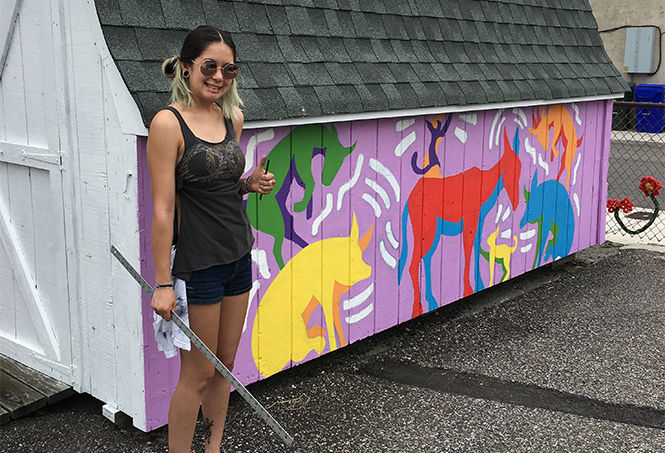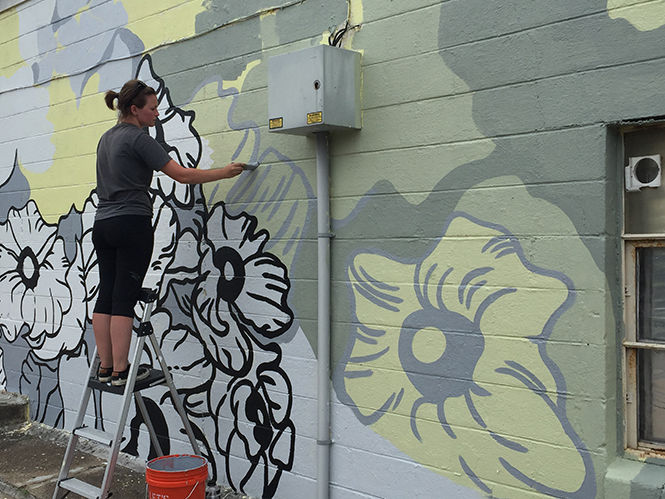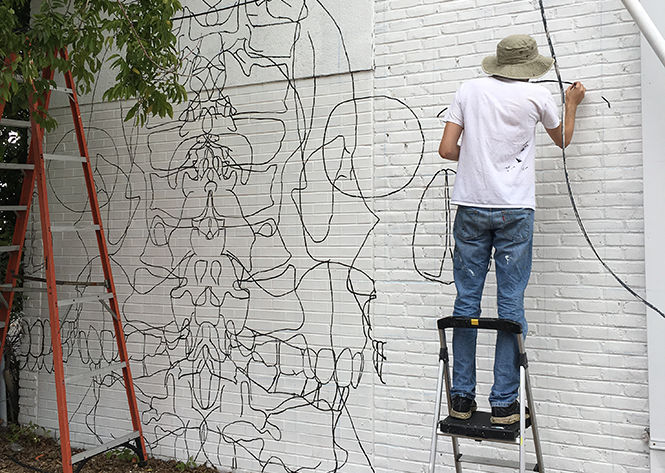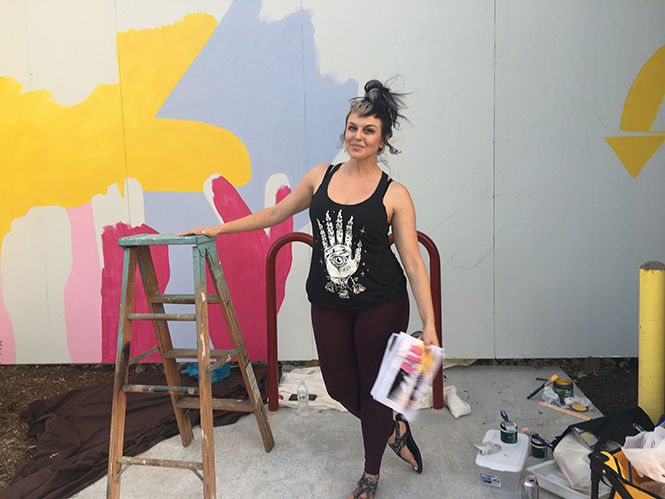
Tips from the Experts:
How to Win a Public Art Call
How does public art happen?
Rarely is art in the public sphere an act of spontaneous inspiration.
For a piece of public art to become a reality, it typically takes months of planning, and multiple meetings of stakeholders with varied interests, including property owners, funding sources, community and civic organizations and, ultimately, the artist her or himself.
What ends up being art that inspires thousands of viewers every day begins in the most mundane of ways: with a Call for Artists application.
That’s why it is important for artists to put their best foot forward in a Call for Artists. Your art can’t make it on the wall if it never makes it through a committee.
With the NEON District announcing five new murals, the timing felt right to speak to three of the most seasoned hands in public art administration in Hampton Roads, and to get their insight on what makes for a great -- and not so great -- response to a Call for Artists.

Red Flags
Do not pass Go, do not submit your application for a public art bid, before heeding the following advice:
- Think about the wall! Yes, that specific wall, on that specific street, in that specific neighborhood, in that specific city.
“A red flag for me personally are people who haven't really thought about the actual neighborhood and the wall they're proposing for,” said Cheryl White, who is the executive director of the Elizabeth River Trail Foundation, and chairperson of the NEON’s public art committee. “I like to see them be thoughtful about the actual wall -- not the plug and play that this could go on any wall anywhere.”
Same thinking applies to sculptural, video, light, or performance proposals. There is no disconnecting the setting and the art in public art.
- Read the whole Call for Artists -- and respond to every question.
“There are people who will not answer all the questions, and who do not provide that written description we ask for,” said White, who noted that incomplete applications are a major red flag.
Public artists aren’t chosen just for their creative ability -- they’re hired to manage a project whose quality will reflect upon all involved. Artists who show that they are detail oriented in their application build trust with the committee from the start.
- Be ready, as an artist.
Winning a public art bid is a career accomplishment for an artist, so it is understandable that artists would be eager to apply and win. But it’s important to make sure that one’s artistic voice, skill level, and professionalism are ready for the monumental task.
“An artist should make good artwork, first and foremost,” said Karen Rudd, longtime head of the City of Norfolk’s public art program.
That quality needs to come through in the portfolio images shared.
“An artist will never get a second look if their artwork and their artwork images are bad or poorly put together,” said Rudd. “If the artist decides to submit a sketch of an idea and the sketch is childish, hard to understand or bad, they most likely won’t get a second look.”
It very much helps to have already created large-scale artwork. Even a mural on a garage in a backyard can show that an artist knows how to scale their work.

What You Should Do in Your Application
- If the call asks for a rendering of your idea, give a rendering of your idea.
“A rendering is really important,” said Downtown Norfolk Council’s Rachel McCall, who has been the driving administrative force behind the vast majority of the public art in the NEON District. “The property owners want to see something that will go up on their wall.”
Not everyone has the ability to visualize something that does not presently exist -- that includes property owners. A visual display of what the wall will look like with the art on it is a necessity, for some.
“You don't need to be an expert in Photoshop,” said McCall. “A drawing can be fine. If you can draw or paint a rendering and take a photo of it with your phone, that's fine. It just does need to address the location in some way.”
- Show that you care about the bigger picture -- and that you’re listening.
White notes that public art is a great way for an artist to expand the reach of their vision and brand, but that’s not the primary purpose of public art, and the artist should understand that.
“Successful applicants talked about the NEON District, in-itself,” said White, “and why they want to do the project in the community, why their design fits with the community.”
Think of public art as an invited guest into a neighborhood. While a guest is always encouraged to be their vibrant selves, a good guest never forgets that actual people live there.
“You have to be listening to the neighborhood around you,” said White. “It's about starting a dialogue about a neighborhood. Artists are tasked with creating visual cues the community can live with and be inspired by.”
- Be flexible!
Creating public art is a vastly different experience than the often solo, personal nature of an artist’s work. It is, by nature, a collaboration.
“Artists often shoot themselves in the foot by being over-committed to their initial idea or presenting too rough of a sketch before meeting with the selection committee,” said Rudd. “It is just as important to make it clear that you are flexible and will develop the final proposal with the committee, the site and the community in mind.”
The art that ends up on the wall is rarely exactly the same as the art initially proposed.
“Being opens to edits and being open to concessions (is so important),” said White. “When you're standing in front of the wall, sometimes elements need to be moved around. A public artist should be someone who is flexible in design to work with the needs of the space. Maybe there's a window opening, or being aware of the way the light works, or how the property next to it needs to be considered.”

Keep applying!!
If at first you don’t succeed, apply and apply again.
“Stick with it. Just keep trying,” said McCall. “Some artists get discouraged once and don't ever apply again. So much of (winning a public art bid) is what the property owner wants. There are so many X factors. Artists should stick with it.”
Nobody loses a public art bid, so much as someone else wins it.
With enough persistence, artist and wall come together in the end.

The NEON District hosts an annual open call for artists to complete murals before fall's NEON Festival, the third Thursday and Friday of each October. Sign up to receive notices on open calls through the NEON's monthly newsletter here.